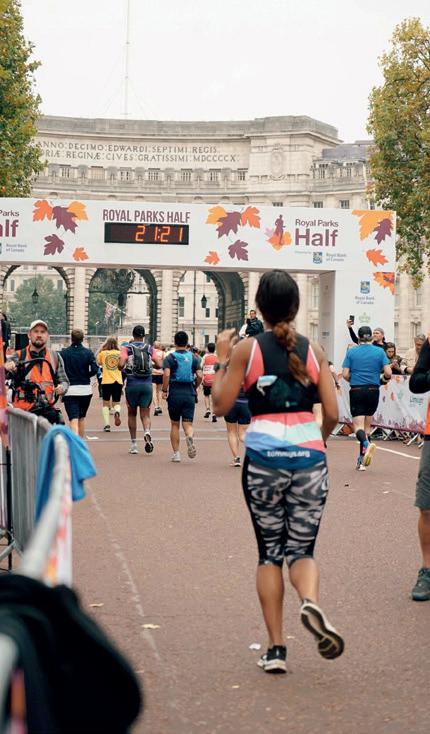
8 minute read
GREEN SHOOTS
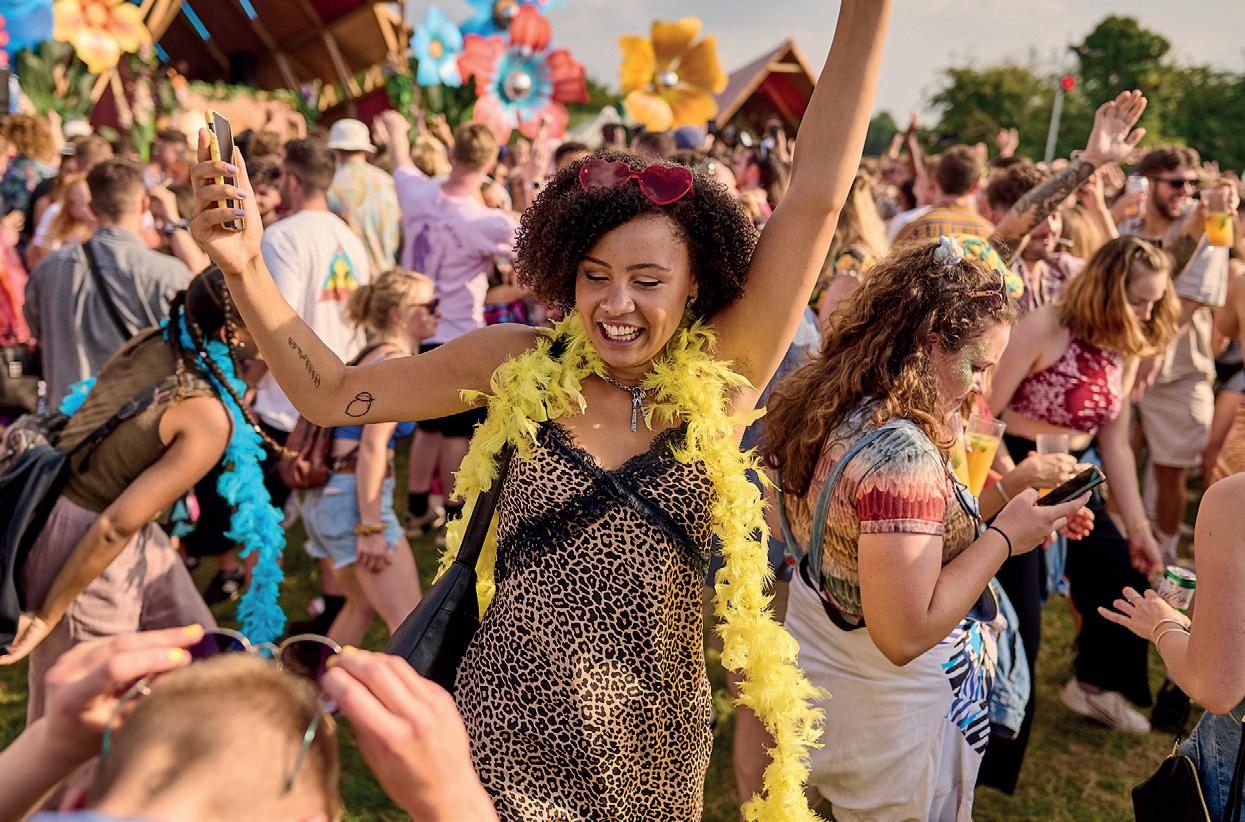
A growing number of event and festival organisers are creating sustainability charters and manifestos. Here, events professionals discuss their sustainability plans and initiatives
In 2019, Coldplay made a huge public statement and told fans that the band would no longer tour until they had worked out how to do it in a more sustainable way. Fast forward two years and Coldplay has announced that they will begin a world tour in March 2022, powered by solar tiles, HVO fuel, and kinetic energy. They will also plant a tree for every ticket sold, build the stage from low-carbon materials, and provide each tour venue with a sustainability rider, requesting best environmental practices.
The tour – Music Of The Spheres – will hit the UK in August. Its announcement comes with a comprehensive set of sustainability initiatives and environmental commitments, including ethically and sustainably sourced merchandise, Sustainable Aviation Fuel, and renewable, super-low emission energy.
Together with Green Nation, Live Nation’s sustainability platform, Coldplay will be a “special artist advisor”, ensuring the sustainable practices developed on the tour are shared, adopted, and scaled through the rest of the live touring industry.
In a statement, the band said that playing live is why Coldplay exists. But whilst they love playing live, they are conscious that the planet is facing a climate crisis. The band commented: “We’ve spent the last two years consulting with environmental experts to make this tour as sustainable as possible, and, just as importantly, to harness the tour’s potential to push things forward. We won’t get everything right, but we’re committed to doing everything we can and sharing what we learn.”
RECOGNISING IMPACTS
Such a joined up, partnership approach is widely accepted as the way forward. Information sharing is vital and it’s as important to educate people internally and externally if progress is to be made. Roy Luxford, programme director at Edinburgh International Festival (EIF), concurred. New ways of working can only be achieved through knowledge sharing and collaboration.
LOVE SAVES THE DAY © Mike Massaro
ROYAL PARKS HALF MARATHON
DISCARDED CLOTHING AT THE START OF THE LONDON MARATHON
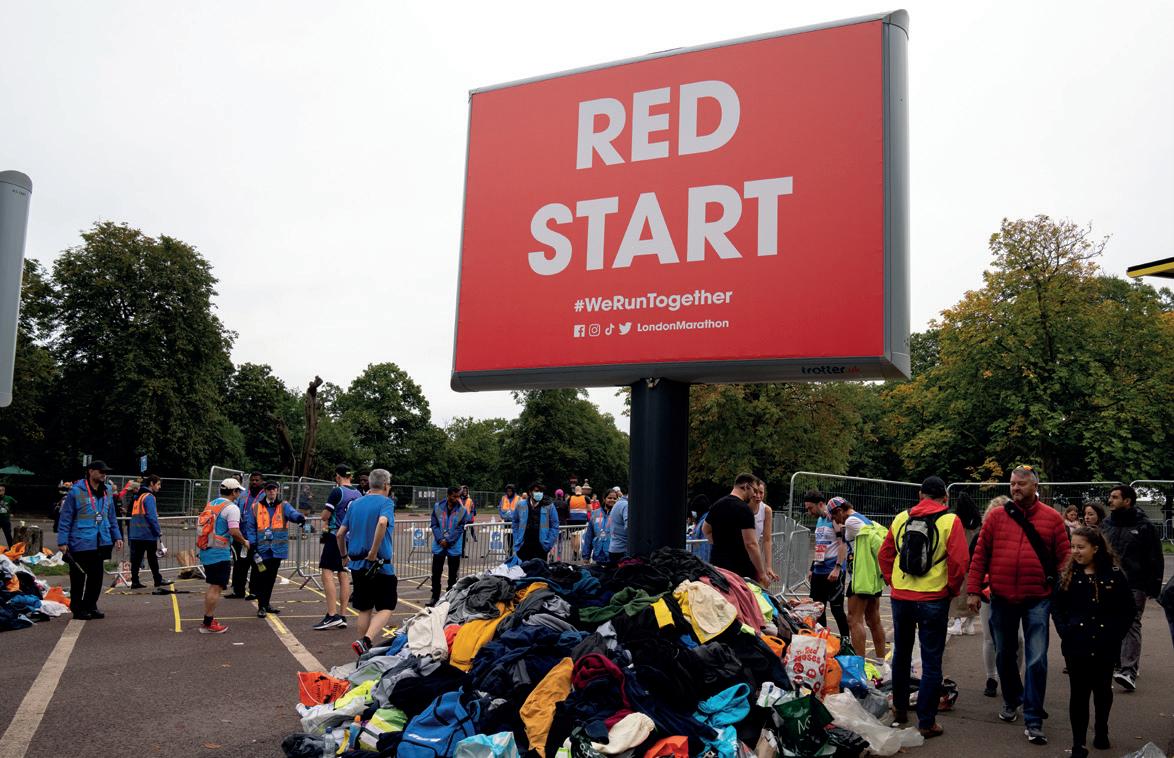
© London Marathon Events/Adam Warner
This year, EIF made some changes to the event. The organisation is particularly keen to reduce its carbon impact and has subsequently published a Sustainability Policy and Carbon Reduction Plan. Luxford explained: “The International Festival is an unparalleled celebration of the performing arts and an annual meeting point for people of all nations. We recognise the impact that our activities can have on the environment and are committed to reducing these impacts by setting and achieving clearly defined objectives and targets, as well as developing frameworks to achieve continual improvement. “The 2021 International Festival involved significantly less international travel in the case of artists and audiences due to COVID-19 travel restrictions, so we will benchmark future emissions against the 2019 festival. This year we introduced artist residencies to further decrease the carbon intensity of our programme, with Scottish violinist Nicola Benedetti, bass-baritone Thomas Quasthoff and the Chineke! Orchestra all in residence at this year’s festival. We also published our Sustainability Policy and Carbon Reduction Plan, adopted a carbon offsetting scheme, and replaced all festival building light fittings with LED.” The Edinburgh International Festival’s sustainability priorities are to reach net-zero carbon emissions across its organisational operations by 2030 and across its artistic programme by 2045. It also wants to work with partners to instil sustainability best practice from inception to delivery of the festival and embrace new models of working with companies and orchestras to reduce carbon impact.
GREEN TARGETS
The Royal Horticultural Society (RHS) has also been looking at its sustainability policies. In 2018, it engaged A Greener Festival and is now working towards rolling out a Sustainability Policy specifically for RHS shows. It would encompass the RHS’ existing environmental regulations whilst setting out new “green targets” as all RHS shows are planned. At RHS Chelsea Flower Show, the aim is to impose a ban on all single use plastics at front of house by 2022 and back of house by 2025. The event has already made a positive switch to biofuel generators, which will significantly reduce carbon emissions, saving more than 52,000 kg of CO2. Plus, the team is looking at ways to reduce water consumption by, for example, switching all toilets to ones that use a vacuum system, reducing water use in toilets by up to 90 per cent.
Water usage is of huge concern and has been a key focus for many organisations, including London Marathon Events (LME) and LimeLight Sports.
This year, London Marathon used electricpowered lead vehicles, and all venue generators were powered by HVO fuel. LME also partnered with The British Heart Foundation, which collected more than 17 tonnes of discarded clothing at the start. This will either be sold in BHF London shops or recycled. Plus, LME encouraged all participants to wear a bottle belt, which helped reduce use of bottles on the course.
DRIVE SUSTAINABILITY FORWARD
Gemma Marks, client services director at LimeLight Sports, is the company’s sustainability lead and champion. In January, LimeLight launched a sustainability manifesto, addressing its long-term commitment to social, environmental, and economic sustainability. It is specifically designed to track progress. Marks explained: “When we launched the manifesto, we always knew that 2021 would be a benchmark year, a year of review before we drive improvements in 2022.”
LimeLight Sports delivers a series of mass participation events, including Hackney Half Marathon, Oxford Half Marathon, Asics London 10k, and Royal Parks Half Marathon. This year, at the Hackney Half, Oxford Half and Asics 10k, the LimeLight team worked especially hard on sustainability. Kit bags were removed, plastic bottles were removed from site, and race routes featured 100 per cent recyclable cups.
“At Hackney Half we had 25,000 drawstring bags made from 2019’s leftover event t-shirts,” said Marks. “At Asics London 10k, we gave people the option to opt out of receiving a t-shirt and plant a tree instead – 1,000 people did.
“At the Blenheim Palace Tri-athlon and London Triathlon, we had dynamic pack assignments. Instead of sending participants their race packs pre-race, we gave them their race numbers on the day. This saved us from duplicating spares and there was no postage and packaging.
“But at Royal Parks Half Marathon we took a big step and asked runners to be self-sufficient with their hydration. Water stations create a lot of waste. We used to have five water stations on the route, which all needed staff, furniture, and bowsers. In 2020, when we asked people to take part in the Virtual Royal Parks Half, people had to look after their own hydration. Making this move has potentially saved 70,000 cups and the associated water waste.”
The Royal Parks Half did feature water refill stations at three points on the course and at the finish, but these were set back from the route. Marks said that LimeLight is committed to trialling new solutions, particularly those that reduce water consumption and waste. However, a big education piece is needed to ensure participants are aware of new measures and it’s important to ask participants what’s important to them, with data used to inform future planning.
Now, LimeLight and Marks is working with Sara Tomé, sustainability manager at Royal Parks, to calculate the event’s carbon footprint. Again, this will drive improvements in 2022. Marks continued: “In 2022, we will seriously focus on driving sustainability forward, making sure it is built into every decision and thought process.”
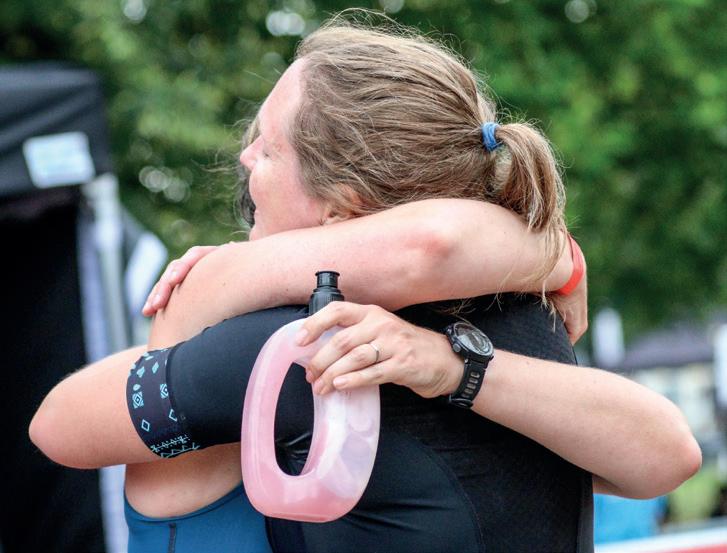
DETAILED INFORMATION
According to Marks, changing behaviour will be a huge comms piece. Parklife has signed a sustainability charter and has pledged to share sustainability goals and adopt transparency. This is the way forward for many organisers. Pauline Bourdon, sustainability and social cohesion coordinator at Team Love, organiser of Love Saves The Day, agreed. Team Love surveys customers to discover what they want from the festivals they attend, and the consensus is that festivalgoers want to know more about sustainability, and they want detailed communication, not generic information.
At Love Saves The Day, Team Love powered the festival with HVO fuel, used compostable toilets back of house and near the main stage, and used reusable cups. The company also issued traders with sustainability guidance but did not enforce rules, given the difficult trading year they had experienced.
In 2022, Love Saves The Day will take place at a new site – Bristol’s Ashton Court – so Bourdon and her team will capture essential data and use this to move forward and create a five-year sustainability plan.
LIMELIGHT SPORTS
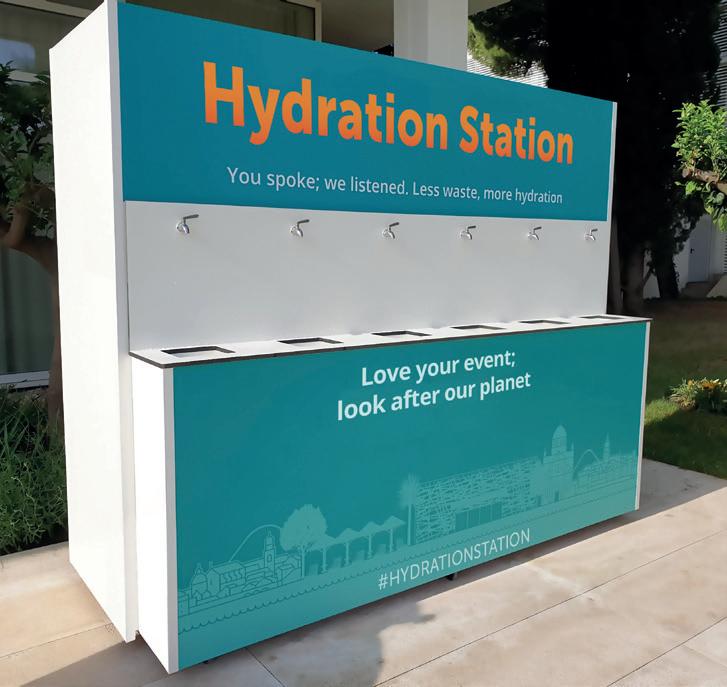
HYDRATION STATION AT ARUBA CONFERENCE
BETTER PLANNING
“A responsible event is a sustainable event,” said Stuart Knight, commercial director at Quintessential. “There are lots of statements being made about zero carbon events, but you can never achieve everything in year one. It’s important to set targets, then review, listen, and listen again.”
Quintessential, the brand experience agency, recently produced a Sustainable Events Charter. Pre-COVID, the agency carried out a lot of work, ensuring it was focused on the future and future event production.
Quintessential works with Hewlett Packard Enterprise’s Aruba, delivering its’ annual conference for 3,000 people, cutting waste, truck movements, and water bottles and utilising modular infrastructure, for example.
Knight concluded: “In 2022, I think sustainability will be part of a wider conversation, but people will struggle to sell in sustainability if there’s a cost increase. It is possible to be cost effective, but you need to do the work and the planning. Better planning gives you better results.”




